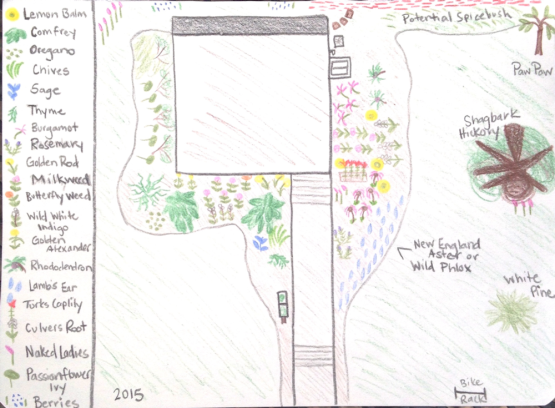
Summary
Biodiversity and food sources for wildlife are greatly declining due to development of land to shopping centers and subdivisions, the use of agricultural pesticides, herbicides, and fertilizers, the intensive management of grassland roadsides, and the prevalence of genetically modified crops that require the use of Roundup®.
Many types of wildlife, such as songbirds, native plants, native insects, and other critters, are affected due to the above listed reasons. Particularly, monarch populations are effected because their basic food sources, such as milkweed, have been severely diminished. Milkweed is the only plant that monarch caterpillars can eat, so butterflies lay their eggs on milkweed plants. As monarch butterflies migrate south for the winter, they lay eggs along the way. Without milkweeds, and other nectar plants for the butterflies to use as a food source, they are not able to survive or reproduce.
Monarch Waystation
A certified Monarch Waystation is a stopping grounds habitat to support monarchs as hundreds of millions of them migrate south to central Mexico for the winter (refer to migration map on page 1). A Monarch Waystation is required to have native host plants for larvae and nectar plants for energy sources. In addition to providing native milkweed and nectar plants, a Monarch Waystation must provide places of shelter with plant density and sustainable management practices such as removing invasive species, eliminating the use of insecticides, and using natural compost.
Before plants were planted at the Ecohouse, the compost on site was added (or amended) to the soil. Native plants (listed below) were chosen to meet the Monarch Waystation requirements, but also because they invite native insects and other native species, filter water better, and are adapted to the climate in this region. All plants were planted in the front left, front right, and right side of the Ecohouse. The very front left, between the Monarch Waystation sign and comfrey bush, was left open for culinary herbs such as basil, parsley, cilantro, etc. Plants already at the Ecohouse that contribute to the Monarch Waystation include the Paw Paw tree, comfrey, lavender, lemon balm, and lamb’s ear.
National Wildlife Federation (NWF) Certified Wildlife Habitat
The NWF’s Certified Wildlife Habitat is intended to created environments in parks, yards, gardens, urban areas, or school landscapes that support wildlife. The NWF describes four components of a habitat that wildlife need to survive: (1) food such as native plants, seeds, and berries; (2) water sources to drink, bathe, or breed; (3) places for cover or shelter to hide from bad weather or from predators; and (4) places to raise young or reproduce such as dense shrubs, mature trees, or host plants. The certification also requires at least two forms of sustainable gardening practices.
The Ecohouse already fulfilled the minimum requirements for each category. Seeds and nectar are available from various plants, the huge and glorious Shagbark Hickory tree provides nuts, and there is plenty of twigs and foliage surrounding the property. A small stream runs across the street, granted the wildlife have to cross the semi-busy road. Wildlife is able to take cover in the wooded areas and dense shrubs/thicket behind the house.
List of Plants On Site as of Fall 2015:
| Common Name | Scientific Name | Quantity |
|---|---|---|
|
Bergamot
|
Monarda fistulosa | 6 |
|
Butterfly Weed
|
Ascelpias tuberosa | 6 |
|
Coneflower
|
Echinacea angustifolia | 2 |
|
Pale Coneflower
|
Echinacea pallida | 2 |
|
Purple Coneflower
|
Echinacea purpurea | 2 |
|
Tennessee Coneflower
|
Echinacea tennessensis | 2 |
|
Culver’s Root
|
Veronicastrum virginicum | 5 |
|
Golden Alexander
|
Zizia aurea | 5 |
|
Milkweed
|
Asclepias syriaca | 6 |
|
Swamp Milkweed
|
Asclepias incarnate | 5 |
|
Sweet Goldenrod
|
Solidago odora | 5 |
|
Wild White Indogo
|
Baptisia alba | 5 |
|
Passionflower
|
Passiflora incarnata Planted along left side of house | 7 |

Deer ate the ironweed, and munched on many of the coneflowers. Around 5 coneflowers remain, and 2 or 3 goldenrods remain.
All of the above content was provided by Janice Brewer, 2015 Landscape Manager
